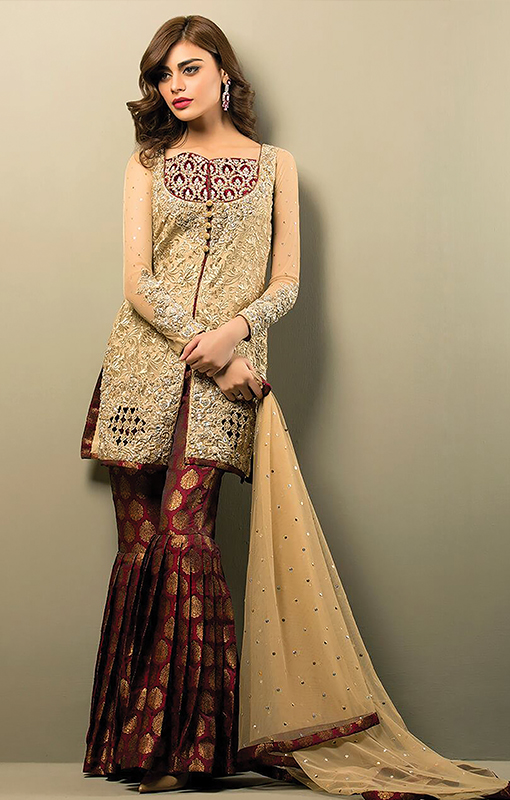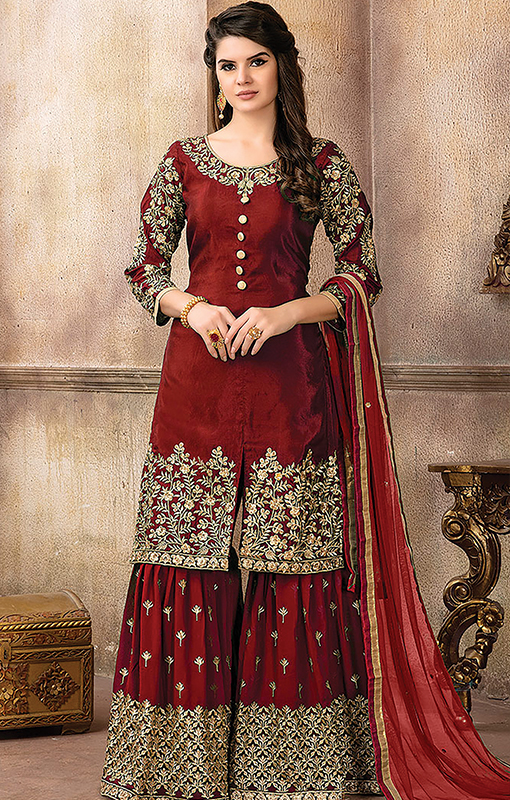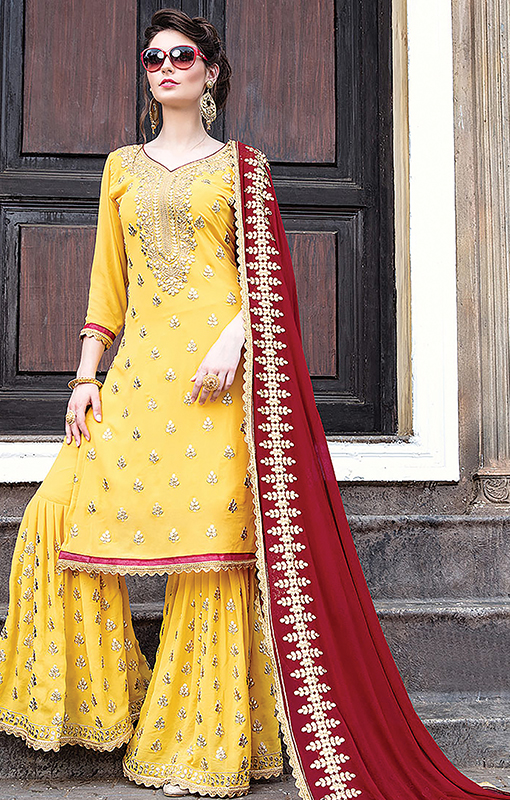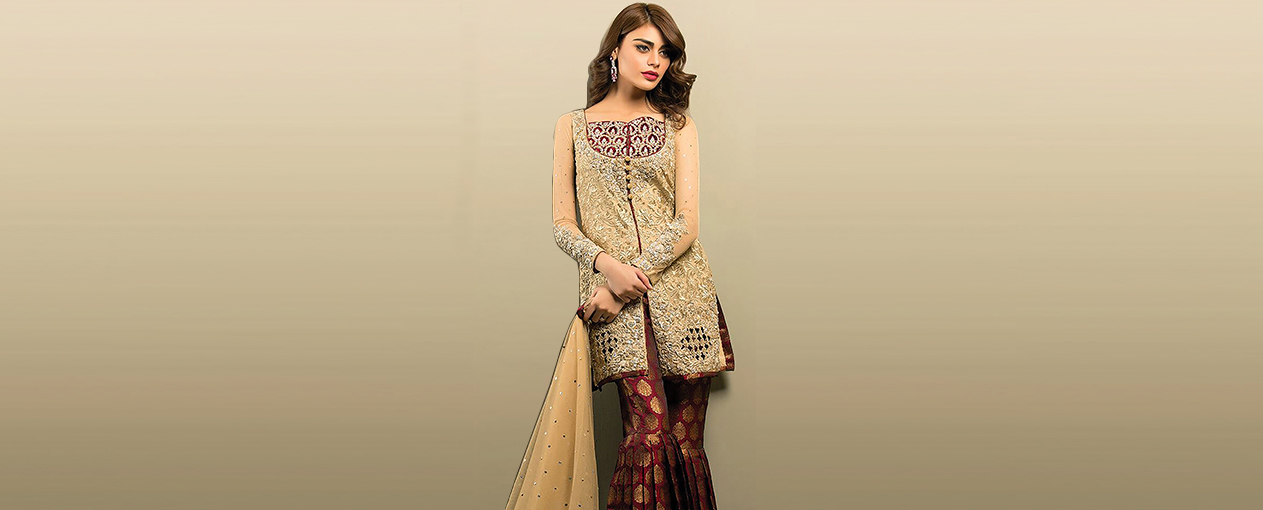Emerging from the ethnic soils of South Asia, Gharara is the most traditional form of outfit comprising a short or knee-length kurti, a dupatta,teamed with a pair of wide-legged palazzo pants typically ruched at the knee with some intricate design giving the pant a broad flare. It is also a common ethnic wear worn by the Muslim women of North India, South Asia and most popularly in Pakistan.
The later periods of the 19th century and the early phase of the 20th century marked the birth of the Gharara. This traditional attire was noticed and favored by the royal Nawabs of that era. The women who belonged to the elite ‘Taluqedars’ and the Nawab families donned this attire, as it depicted aristocracy, sophistication, and class amongst the bearers. This outfit was also traditionally considered as a wedding outfit worn by Pakistani brides residing in the Northern regions, thus showcasing the rich essence of their ethnic culture and traditions.
This broad-legged ethnically flared pant is donned along with a traditional kurti that reaches a little above the thigh area, and an intrinsically designed and embroidered veil which is traditionally known as dupatta. The knee portion of this outfit is filled with colorful and ethnic designs and patterns which are crafted either in zardozi or zari designs. This brocaded outfit enhances the glamour of the wearer, spreading a royal and a rich spirit.
It is heavily embroidered with skilled craftsmanship of Zardozi and Zari detailing, and studded with different decorative elements, which enhances the glamour quotient of the outfit by several notches. This 12 metered fabric is an ethnic pant which flares and spreads out like a wave as the fabric produces a crimpling effect on the knee.
Gharara is often mistaken as farshi. The differentiating factors between the two garments are the length and design of the top and the bottom. The Kurta in Farshi Pajama may go down to the ankles, while the Kurta in the Gharara extends only till the knees. Similarly, the bottom of the Farshi Pajama is long, with an uninterrupted flow spreading out to the bottom, while the Gharara has a ruched design at the knee, to create broader flares.
During the traditional era, these royal ghararas were only meant to be worn and showcased at weddings and elaborate occasions. But as the years have passed by, lighter and casual versions of Ghararas have come into existence, which enable the outfit to go well at informal occasions. Contemporary designs and prints along with western needle and embroidery work have crawled into the basic essence of this outfit, which has made its appeal more universal.
In today’s day and age, traditional salwar kameez have been given the same gharara effect, which has enhanced its versatility. More vibrant colors, and machine processed printed designs have come into style, giving it a more urban and eclectic appeal. Dainty and pastel shades of colors are given to the outfit by mellowing down its richness and making it look soberer which can be worn on a daily basis. However, it is said that designing ghararas is an art in itself and requires a lot of skill and patience, especially towards the details in embroidery. Today’s designers, however, have adopted several techniques which they use while experimenting with traditional garbs such as the Gharara, while maintaining its traditional stance. Fabrics like chiffon, crepe, satin, georgette and many types of silk are being involved in the making of this outfit, which is proving to add more charm and grace to the traditional attire.


Interesting Facts
- Lehengas are often put in the same league with Ghararas or Shararas. But the distinguishing factor is that the Ghararas are stitched up from the thigh portion, whereas the lehengas flow like a skirt
- Distinguished and royal personalities like Begum Rana Liaquat Ali Khan and Fatima Jinnah donned this traditional outfit during the mid 19th century
- The famous Bollywood actress Sharmila Tagore had worn a Gharara outfit for her wedding in the year 1969, which was later worn by her daughter in law Kareena Kapoor on her wedding day in the year 2012.


